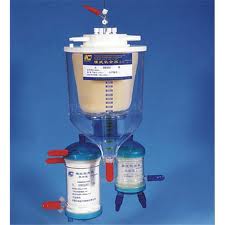Membrane Oxygenator

A membrane oxygenator serves the purpose of enriching blood with oxygen and
eliminating carbon dioxide from it. It operates primarily in two modes:
mimicking lung function during cardiopulmonary bypass (CPB) and providing
blood oxygenation for longer-term life support, known as extracorporeal
membrane oxygenation (ECMO).
Comprising a thin, gas-permeable membrane, a membrane oxygenator facilitates
the exchange of gases between the blood and gas streams within the CPB
circuit. Oxygen moves from the gas side into the blood, while carbon dioxide
moves from the blood into the gas stream for removal.
Recognizing the drawbacks of direct contact between blood and air, the
development of the less invasive membrane oxygenator aimed to address these
concerns.
The innovation of microporous hollow fibers with minimal resistance to mass
transfer revolutionized membrane module design. With blood resistance
becoming the main limiting factor to oxygenator performance, current designs
typically adopt an extraluminal flow approach, where blood circulates
outside gas-filled hollow fibers, for short-term life support. Meanwhile,
only homogeneous membranes are approved for prolonged use.
undo Medical Equipment